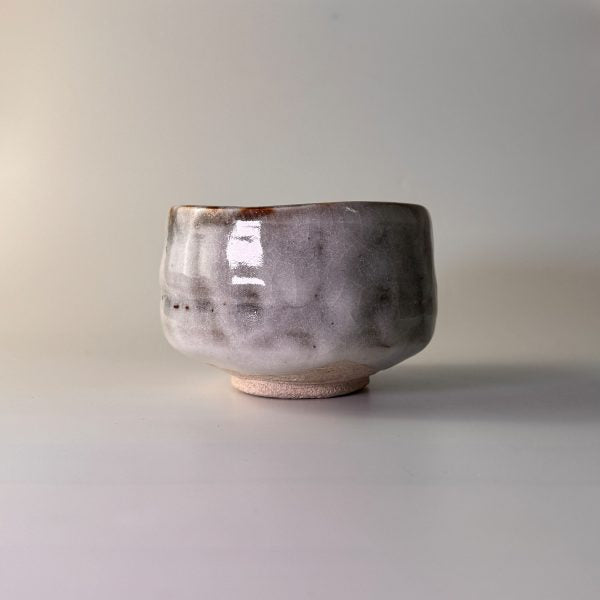

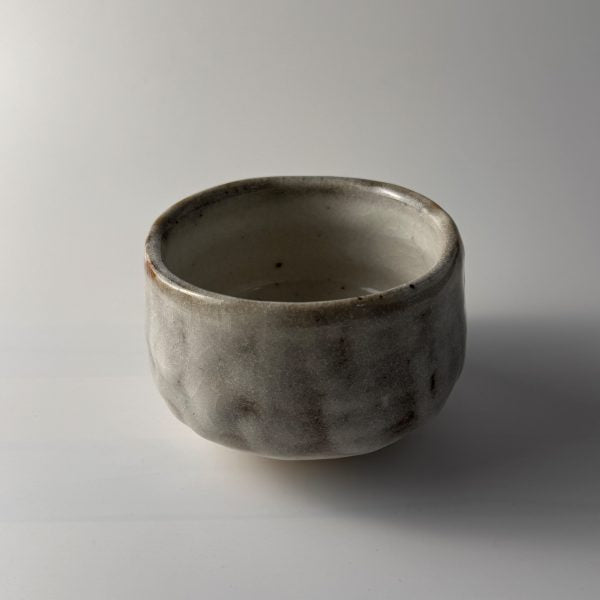
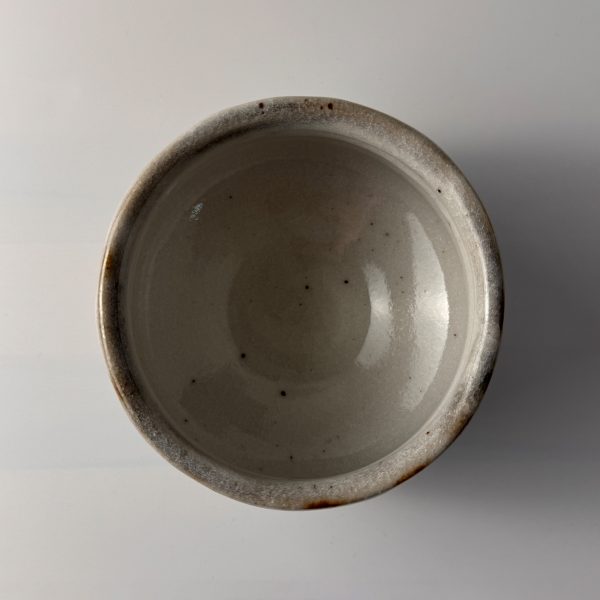
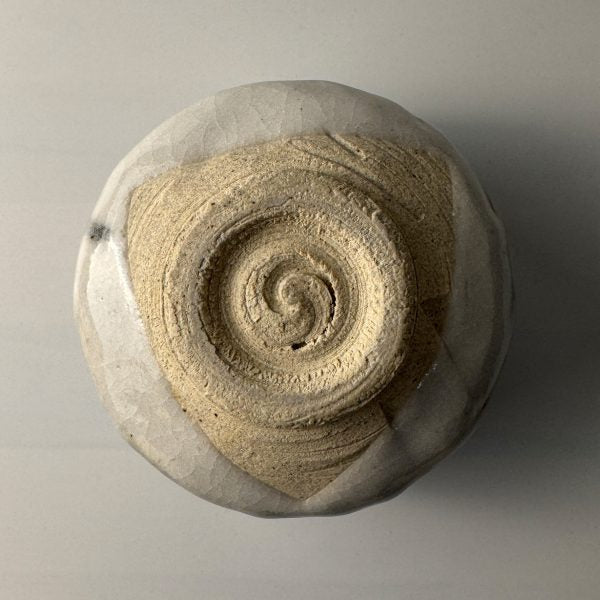
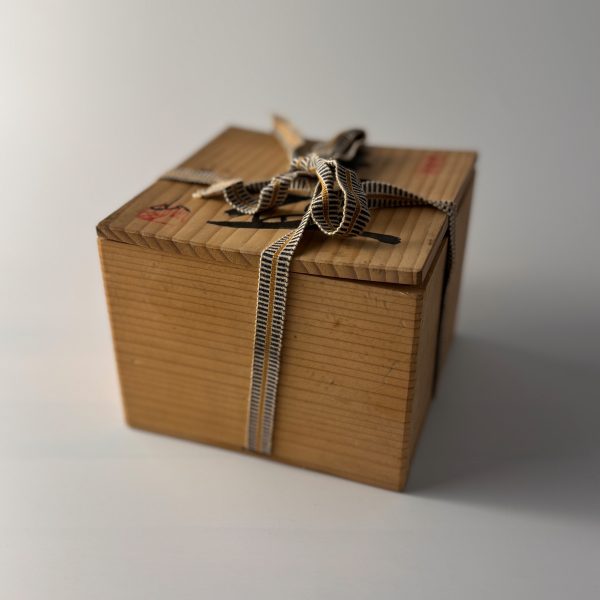
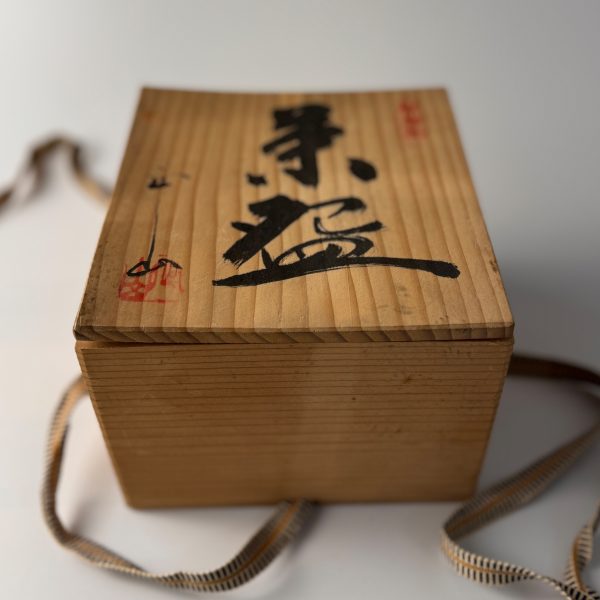
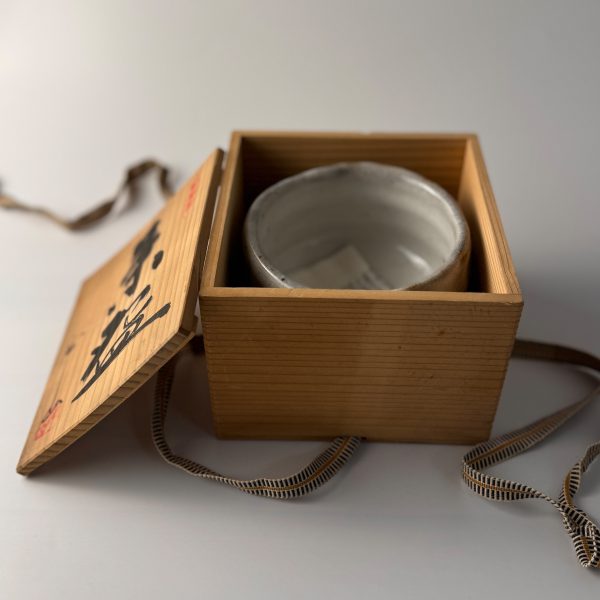
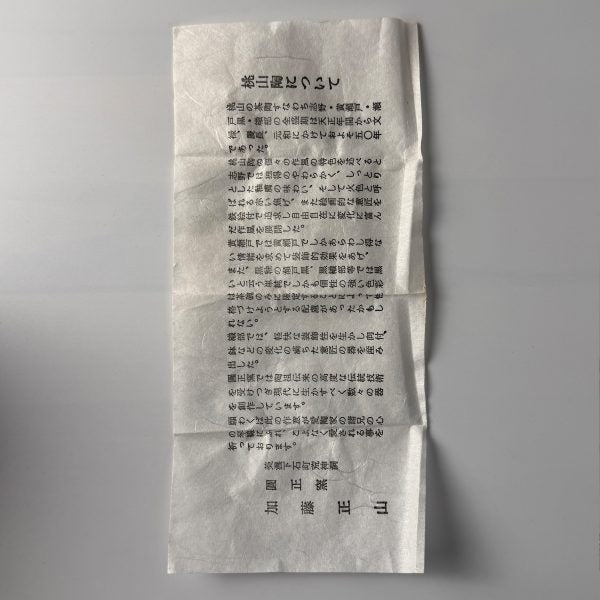
Matcha bowl Enshō – handmade matcha cup from Japan with a marble look
Tax included. Shipping calculated at checkout
Japanese tea aesthetics to touch: Matcha bowl Enshō from the Enshō kilns
This matcha bowl, traditionally called a matchawan , is a truly unique piece: handmade in Japan from authentic ceramic, with a unique marbled look and subtle, irregular flecks reminiscent of weathered stones. Its special shape—Han tsutsu-gata (半筒型), or semi-cylindrical—gives it an understated elegance while remaining pleasantly heavy in the hand.
Expression of Japanese craftsmanship in marble look
The surface is vibrantly textured and features a flowing glaze that gently shifts in the light. What at first glance appears to be a stylized natural phenomenon is in fact the result of centuries-old recipes and craftsmanship still practiced in only a few Japanese workshops. The Kaijiri Kodai (貝尻高台), a rare, spiral-shaped foot, gives the bowl a subtle architectural accent—almost like a signature in the clay.
Matcha vessel with history and origin
This matcha cup comes from one of the traditional Enshō kilns, where ceramics expertise has been passed down through generations. It was purchased directly in Japan by a Growing Karma team member – not a middleman, not a replica, but a treasure with a history. It's an original vintage matcha bowl that's not only a visual highlight, but also tangibly enhances the ritual of the tea ceremony.
Haptics, shape and weight in harmony
With a diameter of 11.5 cm, a height of 8 cm, and a weight of 447 grams, the matcha bowl sits securely and comfortably in the hand. The uneven surface not only enhances the sense of authenticity but also ensures that the chasen—the bamboo whisk—can be guided precisely when preparing matcha. The special depth of the shape also facilitates the development of the fine foam.
Signed wooden box included
This matcha bowl comes in an original wooden box signed by the potter—traditional packaging that not only offers protection but also expresses respect for the work. An enclosed certificate provides information about the origin and workshop, with a verbatim translation and a note on the traditional Momoyama pottery to which the piece refers.
For connoisseurs with a sense for the real
Whether as a matcha cup, matcha bowl, or a sophisticated matcha vessel, this piece of Japanese ceramic art adds depth to your tea ceremony. The precise craftsmanship, the interplay of glaze and surface, the tangible history of the material: all this makes it a truly special companion for your tea journey. And once you hold it in your hand, you'll immediately realize that this isn't about perfection, but rather expression, history, and character.

